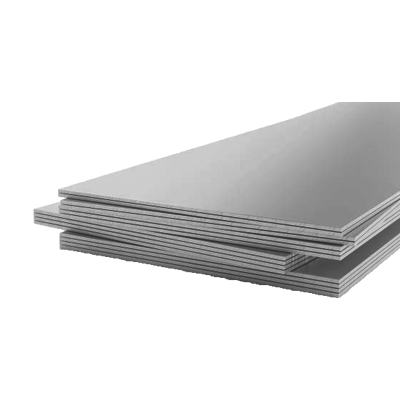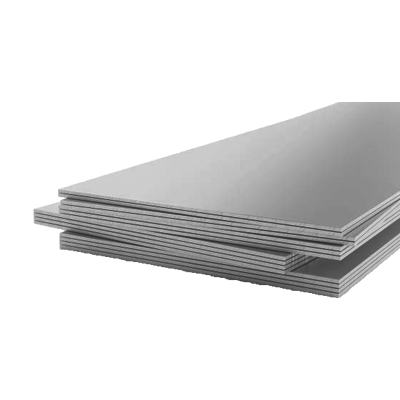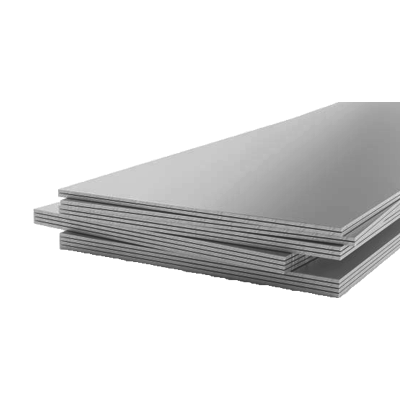Call +(254) 703 030 000 / 751 483 999 / 721 704 777
.....Read More
Frequently Asked Questions
What are carbon steel flat products?
Carbon steel flat products are a category of steel products that are characterized by their flat shape and are primarily made from carbon steel, which is an alloy of iron and carbon. These products are typically produced through rolling processes and are used in a wide range of applications due to their versatility, strength, and cost-effectiveness.
The main types of carbon steel flat products include:
1. **Hot Rolled Coils (HRC):** These are produced by rolling steel at high temperatures, which makes the steel easier to shape and form. Hot rolled coils are typically used in construction, automotive, and heavy machinery industries.
2. **Cold Rolled Coils (CRC):** These are made by further processing hot rolled coils at room temperature. This process increases the strength and improves the surface finish, making cold rolled coils suitable for applications requiring precision and aesthetic quality, such as in the manufacturing of appliances and automotive parts.
3. **Plates:** These are thicker flat products that are used in applications requiring high strength and durability, such as shipbuilding, construction, and pressure vessels.
4. **Sheets:** Thinner than plates, sheets are used in a variety of applications, including automotive panels, roofing, and cladding.
5. **Strips:** Narrower than sheets, strips are often used in the production of welded pipes, tubes, and various structural components.
Carbon steel flat products are valued for their mechanical properties, including tensile strength, ductility, and weldability. They can be further processed through cutting, bending, and coating to meet specific requirements. The carbon content in these products can vary, influencing their hardness and strength, with higher carbon content generally leading to increased hardness and strength but reduced ductility.
What are the different types of carbon steel based on carbon content?
Carbon steel is categorized based on its carbon content into three main types:
1. **Low Carbon Steel (Mild Steel):**
- Carbon Content: Approximately 0.05% to 0.25%.
- Characteristics: It is ductile, malleable, and easy to machine and weld. It has a relatively low tensile strength but is inexpensive and widely used.
- Applications: Commonly used in the manufacturing of car bodies, structural beams, and general-purpose engineering.
2. **Medium Carbon Steel:**
- Carbon Content: Approximately 0.25% to 0.60%.
- Characteristics: Offers a balance between ductility and strength. It is harder and stronger than low carbon steel but less ductile. It can be heat-treated to improve its mechanical properties.
- Applications: Used in the production of automotive components, machinery parts, and railway tracks.
3. **High Carbon Steel:**
- Carbon Content: Approximately 0.60% to 1.4%.
- Characteristics: Known for its high strength and hardness. It is less ductile and more brittle than lower carbon steels. It can be heat-treated to achieve a very hard surface.
- Applications: Ideal for manufacturing cutting tools, springs, high-strength wires, and knives.
Each type of carbon steel has distinct properties that make it suitable for specific applications, balancing factors like strength, ductility, and cost.
What are the applications of low carbon steel flat products?
Low carbon steel flat products are widely used across various industries due to their versatility, affordability, and favorable mechanical properties. Here are some key applications:
1. **Automotive Industry**: Low carbon steel is extensively used in the manufacturing of car bodies, chassis, and other structural components due to its excellent formability and weldability. It helps in reducing vehicle weight while maintaining structural integrity.
2. **Construction**: In the construction sector, low carbon steel flat products are used for making structural beams, columns, and reinforcements. They are also used in the production of roofing, cladding, and other architectural elements due to their strength and durability.
3. **Appliances**: Household appliances such as refrigerators, washing machines, and ovens often use low carbon steel for their outer shells and internal components. Its ease of fabrication and cost-effectiveness make it ideal for mass production.
4. **Pipes and Tubes**: Low carbon steel is used to manufacture pipes and tubes for plumbing, heating, and air conditioning systems. Its resistance to corrosion and ability to withstand pressure make it suitable for these applications.
5. **Shipbuilding**: The shipbuilding industry uses low carbon steel for hulls and other structural parts of ships. Its toughness and ability to withstand harsh marine environments are crucial for this application.
6. **Machinery and Equipment**: Low carbon steel flat products are used in the production of various machinery and equipment, including agricultural machinery, industrial machines, and tools. Its machinability and strength are advantageous for these applications.
7. **Packaging**: Steel cans and containers for food and beverages are often made from low carbon steel due to its ability to be easily formed and coated for corrosion resistance.
8. **Energy Sector**: In the energy sector, low carbon steel is used in the construction of wind turbines, transmission towers, and other infrastructure due to its strength and reliability.
These applications highlight the importance of low carbon steel flat products in modern industry, providing a balance of performance, cost, and versatility.
How is medium carbon steel used in industries?
Medium carbon steel, typically containing 0.3% to 0.6% carbon, is widely used in industries due to its balanced properties of strength, ductility, and wear resistance. It is often employed in applications where a combination of strength and toughness is required.
1. **Automotive Industry**: Medium carbon steel is used in the manufacturing of automotive components such as axles, crankshafts, and gears. Its strength and wear resistance make it ideal for parts that undergo significant stress and require durability.
2. **Construction**: In construction, medium carbon steel is used for structural components like beams and columns. Its ability to withstand stress and its moderate ductility make it suitable for supporting heavy loads and providing structural integrity.
3. **Machinery and Equipment**: This type of steel is used in the production of machinery parts, including shafts, couplings, and bolts. Its toughness and ability to be heat-treated for enhanced properties make it suitable for components that experience high mechanical stress.
4. **Railway Industry**: Medium carbon steel is used in the manufacturing of railway tracks and wheels. Its wear resistance and strength are crucial for withstanding the heavy loads and friction encountered in rail transport.
5. **Tools and Hardware**: It is also used in the production of tools such as hammers, wrenches, and blades. The steel's hardness and ability to maintain a sharp edge make it ideal for cutting and shaping applications.
6. **Agricultural Equipment**: Medium carbon steel is used in the production of agricultural machinery and equipment, such as plows and tillers, where durability and resistance to wear are essential.
Overall, medium carbon steel's versatility and balanced mechanical properties make it a valuable material across various industrial sectors.
What are the benefits of high carbon steel flat products?
High carbon steel flat products offer several benefits due to their unique properties:
1. **Strength and Hardness**: High carbon steel contains a higher percentage of carbon, typically between 0.6% and 1.4%, which significantly enhances its strength and hardness. This makes it ideal for applications requiring durability and resistance to wear and tear, such as cutting tools, blades, and industrial machinery.
2. **Wear Resistance**: The increased hardness of high carbon steel provides excellent wear resistance, making it suitable for products that undergo frequent friction and abrasion. This property is particularly beneficial in manufacturing tools and components that need to maintain their integrity over time.
3. **Edge Retention**: High carbon steel is known for its ability to maintain a sharp edge, which is crucial for cutting tools and knives. This edge retention reduces the need for frequent sharpening, enhancing efficiency and performance in various applications.
4. **Cost-Effectiveness**: While high carbon steel is more expensive than low carbon steel, its durability and longevity can lead to cost savings over time. The reduced need for replacement and maintenance makes it a cost-effective choice for many industries.
5. **Versatility**: High carbon steel flat products can be used in a wide range of applications, from automotive components to construction materials. Their versatility makes them a valuable resource in multiple sectors.
6. **Heat Treatability**: High carbon steel can be heat-treated to further enhance its mechanical properties, such as hardness and strength. This adaptability allows manufacturers to tailor the material to specific requirements, optimizing performance for particular applications.
7. **Recyclability**: Like other steel products, high carbon steel is recyclable, contributing to environmental sustainability by reducing waste and conserving resources.
These benefits make high carbon steel flat products a preferred choice in industries where strength, durability, and performance are critical.
How are carbon steel flat products manufactured?
Carbon steel flat products are manufactured through a series of processes that transform raw materials into finished goods. The process begins with the extraction of iron ore, which is then smelted in a blast furnace along with coke and limestone to produce molten iron. This molten iron is transferred to a basic oxygen furnace (BOF) or an electric arc furnace (EAF) where it is converted into steel by blowing oxygen through it to reduce carbon content and remove impurities.
Once the steel is refined, it is cast into slabs through a continuous casting process. These slabs are then reheated in a reheating furnace to a temperature suitable for rolling. The hot slabs are passed through a series of rolling mills, which progressively reduce their thickness and elongate them into flat sheets or coils. This process is known as hot rolling.
After hot rolling, the steel may undergo further processing to achieve desired properties. It can be cold rolled, which involves passing the steel through rollers at room temperature to improve surface finish and dimensional accuracy. Cold rolling also increases the strength and hardness of the steel.
The flat products may then be subjected to various finishing processes such as annealing, which involves heating and cooling to relieve internal stresses and improve ductility. Surface treatments like pickling, galvanizing, or coating may be applied to enhance corrosion resistance and surface appearance.
Finally, the finished carbon steel flat products are cut to size, inspected for quality, and packaged for distribution. These products are used in a wide range of applications, including construction, automotive, and manufacturing industries.
What factors influence the demand for carbon steel flat products?
The demand for carbon steel flat products is influenced by several key factors:
1. **Economic Growth**: Economic expansion typically leads to increased construction and manufacturing activities, boosting demand for carbon steel flat products used in infrastructure, automotive, and machinery.
2. **Construction Industry**: As a major consumer of steel, the health of the construction sector directly impacts demand. Urbanization and infrastructure projects drive the need for steel in buildings, bridges, and roads.
3. **Automotive Industry**: The production of vehicles requires significant amounts of flat steel products. Trends in automotive manufacturing, such as shifts towards electric vehicles, can influence demand.
4. **Industrial Production**: General industrial activities, including machinery and equipment manufacturing, rely on carbon steel flat products, linking demand to industrial output levels.
5. **Raw Material Prices**: Fluctuations in the cost of raw materials like iron ore and coal can affect steel production costs, influencing market prices and demand.
6. **Technological Advancements**: Innovations in steel production and processing can enhance product quality and reduce costs, potentially increasing demand.
7. **Trade Policies**: Tariffs, quotas, and trade agreements can impact the import and export of steel products, affecting domestic demand.
8. **Environmental Regulations**: Stricter environmental policies may lead to increased production costs or shifts towards alternative materials, influencing demand.
9. **Substitute Materials**: The availability and adoption of alternative materials like aluminum or composites can affect the demand for carbon steel.
10. **Global Market Trends**: International demand and supply dynamics, including competition from other steel-producing countries, can influence local market conditions.
11. **Consumer Preferences**: Changes in consumer preferences, such as a shift towards sustainable products, can impact demand for steel products with lower environmental footprints.
What are the advantages of using carbon steel flat products in construction?
Carbon steel flat products offer several advantages in construction:
1. **Strength and Durability**: Carbon steel is known for its high strength and durability, making it ideal for structural applications. It can withstand heavy loads and resist wear and tear over time.
2. **Cost-Effectiveness**: Compared to other materials like stainless steel or aluminum, carbon steel is more affordable. Its cost-effectiveness makes it a popular choice for large-scale construction projects.
3. **Versatility**: Carbon steel flat products can be easily cut, welded, and formed into various shapes and sizes, providing flexibility in design and application. This versatility allows for customized solutions in construction projects.
4. **Availability**: Carbon steel is widely available and can be sourced from numerous suppliers, ensuring a steady supply for construction needs. This availability helps in maintaining project timelines and reducing delays.
5. **Recyclability**: Carbon steel is 100% recyclable, making it an environmentally friendly option. Using recyclable materials in construction supports sustainability and reduces the carbon footprint.
6. **Thermal Conductivity**: Carbon steel has good thermal conductivity, which can be beneficial in applications requiring heat distribution or dissipation.
7. **Corrosion Resistance**: While not as corrosion-resistant as stainless steel, carbon steel can be treated with coatings or galvanization to enhance its resistance to rust and corrosion, extending its lifespan in construction applications.
8. **Compatibility**: Carbon steel flat products are compatible with other construction materials, allowing for seamless integration into various building systems and components.
9. **Load-Bearing Capacity**: The high load-bearing capacity of carbon steel makes it suitable for use in beams, columns, and other structural elements that require significant strength.
10. **Ease of Maintenance**: Carbon steel structures are relatively easy to maintain, requiring minimal upkeep to ensure longevity and performance.
How do economic conditions affect the carbon steel flat products market?
Economic conditions significantly impact the carbon steel flat products market through various channels:
1. **Demand Fluctuations**: Economic growth typically boosts construction, automotive, and manufacturing sectors, increasing demand for carbon steel flat products. Conversely, during economic downturns, reduced industrial activity leads to decreased demand.
2. **Investment in Infrastructure**: Government spending on infrastructure during economic booms can drive demand for steel products. In contrast, budget cuts during recessions can reduce such investments.
3. **Raw Material Costs**: Economic conditions affect the prices of raw materials like iron ore and coal. Inflation or supply chain disruptions can increase costs, impacting steel production and pricing.
4. **Trade Policies and Tariffs**: Economic conditions influence trade policies. Tariffs or trade barriers can alter import-export dynamics, affecting domestic steel prices and availability.
5. **Currency Fluctuations**: Exchange rate volatility can impact the competitiveness of steel exports and imports, influencing market dynamics and pricing strategies.
6. **Interest Rates**: High interest rates can increase borrowing costs for steel producers and consumers, potentially reducing investment in new projects and slowing market growth.
7. **Energy Costs**: Economic conditions affect energy prices, which are a significant cost component in steel production. Rising energy costs can lead to higher production costs and affect market prices.
8. **Consumer Confidence**: Economic stability boosts consumer confidence, leading to increased spending on durable goods that require steel, whereas economic uncertainty can dampen consumer spending.
9. **Technological Advancements**: Economic prosperity can lead to increased investment in technology, improving production efficiency and product quality, thereby affecting market competitiveness.
Overall, economic conditions shape the supply-demand balance, pricing, and strategic decisions within the carbon steel flat products market, influencing its growth and stability.
What are the environmental regulations impacting carbon steel flat products production?
Environmental regulations impacting carbon steel flat products production include:
1. **Air Quality Standards**: Regulations such as the Clean Air Act in the U.S. require steel manufacturers to limit emissions of pollutants like sulfur dioxide (SO2), nitrogen oxides (NOx), and particulate matter. These rules necessitate the installation of air pollution control technologies.
2. **Greenhouse Gas Emissions**: Policies like the European Union Emissions Trading System (EU ETS) and the U.S. EPA's Greenhouse Gas Reporting Program mandate the monitoring, reporting, and reduction of CO2 emissions. Steel producers must adopt energy-efficient technologies and carbon capture and storage (CCS) solutions.
3. **Water Pollution Control**: The Clean Water Act in the U.S. and similar regulations globally require the treatment of wastewater to remove contaminants before discharge. Steel plants must implement water recycling and treatment systems to comply.
4. **Waste Management**: Regulations demand the proper handling and disposal of solid waste, including slag and dust. The Resource Conservation and Recovery Act (RCRA) in the U.S. sets standards for waste treatment, storage, and disposal.
5. **Energy Efficiency Standards**: Initiatives like the U.S. Department of Energy's Better Plants Program encourage steel manufacturers to improve energy efficiency, reducing overall environmental impact.
6. **Chemical Management**: Regulations such as the Toxic Substances Control Act (TSCA) in the U.S. require the management of hazardous chemicals used in steel production, ensuring safe handling and reducing environmental risks.
7. **Occupational Safety and Health**: While primarily focused on worker safety, regulations like OSHA standards also impact environmental practices by enforcing safe handling of materials and emissions controls.
8. **Sustainability Reporting**: Increasingly, regulations and market pressures require transparency in environmental performance, pushing companies to adopt sustainable practices and report on their environmental impact.



